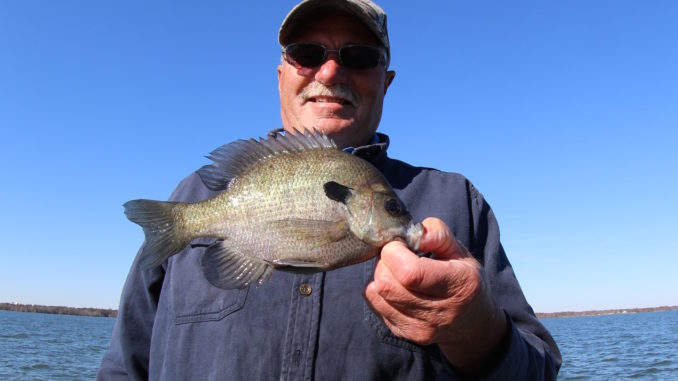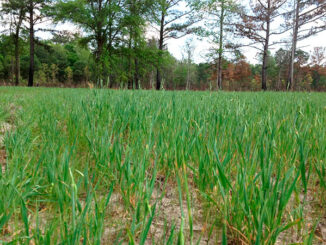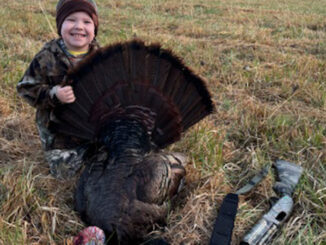
Going deep is the key
Bluegill and shellcracker are easy to find in the spring, and as summer begins to give way to fall, they become predictable again, but in a different way, according to Jay Summers, who fishes bodies of water — big and small — across both Carolinas.
Two of his favorite lakes to fish this time of year for panfish are Lake Wateree in South Carolina and Jordan Lake in North Carolina.
“I really got started on panfish while I was fishing in some catfish tournaments a few years ago. I happened across the bluegill and shellcrackers kind of by accident, but once I figured them out, I got more enjoyment out of them than the catfish,” said Summers, a retired railroad worker.
“I was fishing for catfish with big, whole nightcrawlers right at the Lake Wateree Dam where the water is about 75 feet deep. I kept getting hits, but wasn’t able to land the fish. I finally scaled down my hook size, thinking I was on some small channel cats. The first fish I caught there was a big shellcracker. I was surprised. I just never thought of them as ever going that deep,” said Summers.
As he continued catching more shellcrackers, he remembered a similar instance he’d had at Jordan Lake in the early fall, though not quite so deep.
“So the next time I was at Jordan, I tried it there in a deep hole that I’d marked as a catfish spot. I caught big shellcrackers there too, right on the bottom in about 30 feet of water,” he said.
On the small farm ponds that Summers grew up fishing, he always found bluegill to be in the same areas as shellcrackers, but instead of on the bottom, the bluegills would typically suspend in the water column. So he started experimenting at different depths.
“I found the bluegills at about 50 feet at Wateree, and about 20 feet at Jordan. This can change 5 or 6 feet, but this time of year, I will be able to find them in that range,” he said.
For the shellcrackers, Summers uses a No. 6 Tru-Turn hook and threads a whole nightcrawler on, and he sets up his 7-foot long, light rod with a Carolina rig using a 1/4-ounce bullet weight above a swivel, then a 15-inch fluorocarbon leader. He uses a 1000-series Shimano Stradic spinning reel with 6-pound test braided line.
When targeting the bluegills, Summers goes with the same rod, reel, and line, but he baits these hooks with crickets. He also uses a slip bobber instead of fishing on the bottom. This setup uses a knot that can be slid up and down the line to the angler’s preferred depth, and accommodates the sliding bobber that sits just above the hook for easy casting, then slides to the knot to let the hook and bait sink properly.
“You’d never be able to cast with a fixed bobber set at 50 feet, so a slip bobber is essential,” he said.
“I would love to go ultralight here, but you need something with a little more backbone and tip strength since you’re fishing deep with a 1/4-ounce weight, so a light rod is a good compromise. A 7-footer is good because it gives you more leverage for setting the hook,” Summers said.
Summers said this time of year, this same technique will get you into the bluegills and shellcrackers in just about any body of water in the Carolinas.
“Just go deep. If you’re in a pond that’s only 8 feet deep, fish on the bottom in the deepest hole for shellcrackers, and fish 6 feet deep for bluegills. If you’re in a big lake that’s 80 feet deep, fish at 80 and 70. It’s fun finding these fish at those depths. They put up a big fight, and the action is fast once you find them,” he said.





Be the first to comment